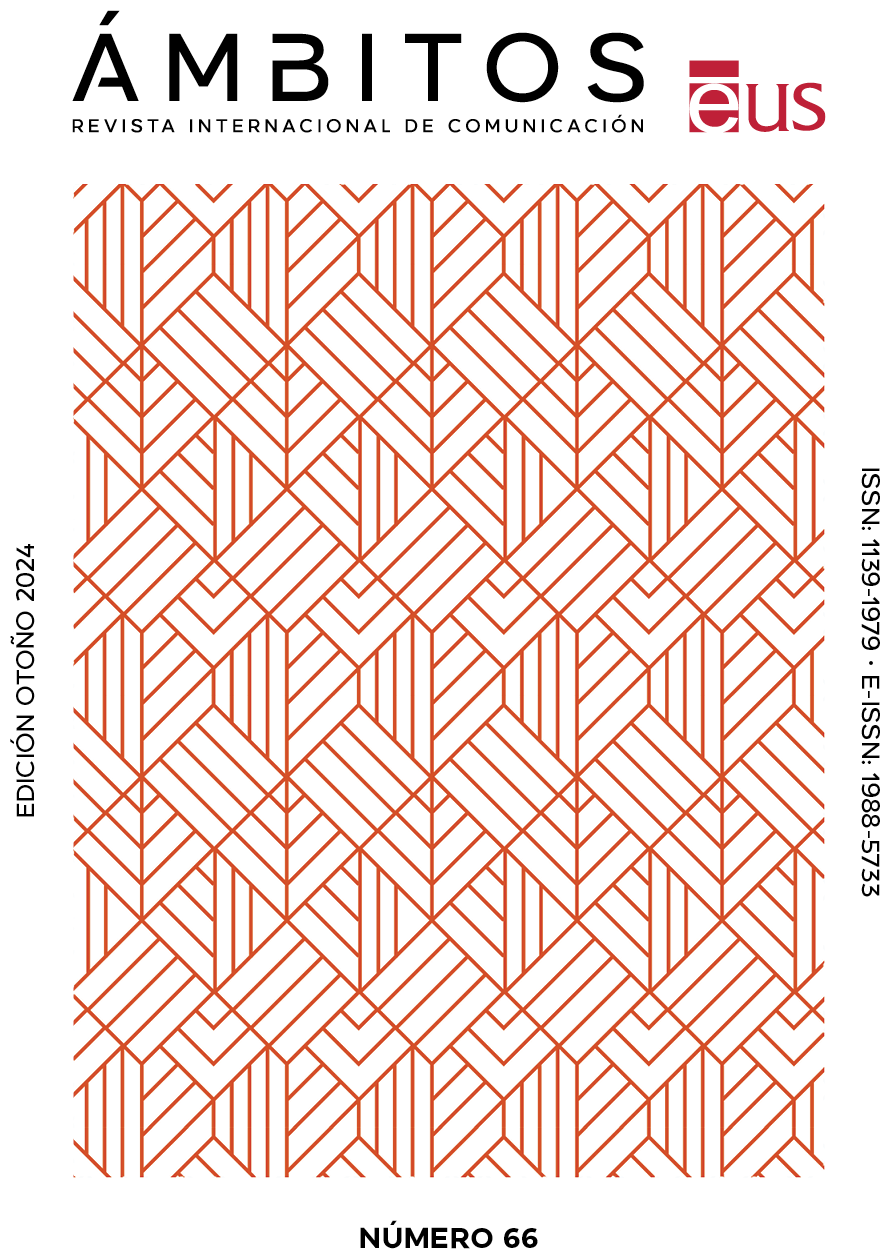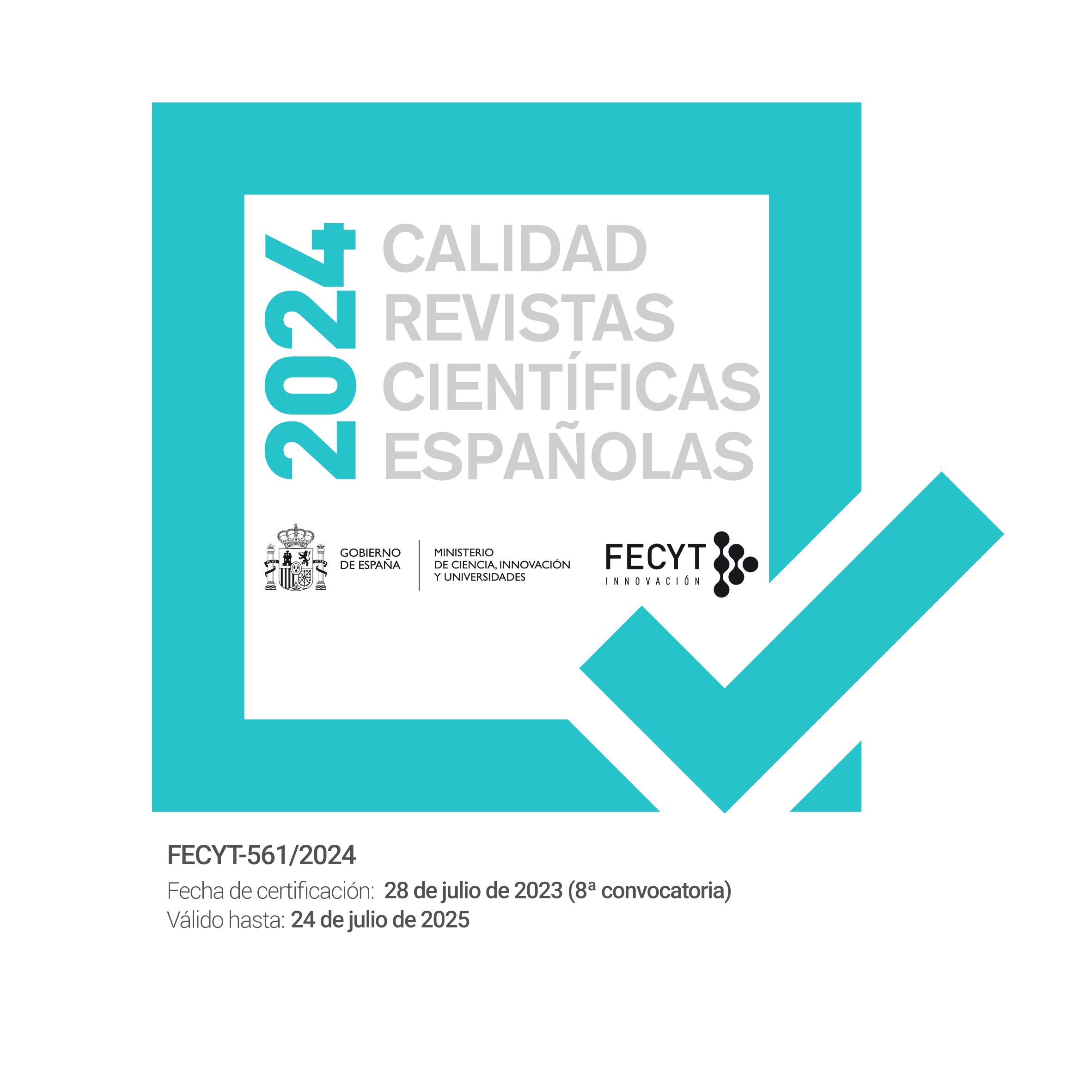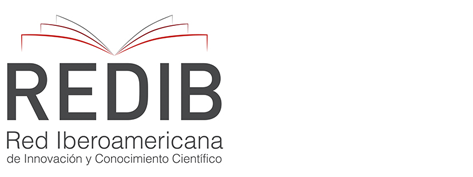Platformed local journalism: analysis of journalistic vehicles Voz do Bico, Folha do Bico, and Tocnoticias
DOI:
https://doi.org/10.12795/Ambitos.2024.i66.02Keywords:
platformization, local journalism, Bico do Papagaio, TocantinsAbstract
The platform operates with an algorithmic governance model that affects the spheres of the journalistic process, from the production, dissemination and circulation of information (Dolata & Schrape 2022; Silva et al., 2020). Thus, the objective of this work is to describe and characterize the use of digital platforms by local journalistic vehicles in the microregion of Bico do Papagaio, in Tocantins, state of northern Brazil. The study is justified by the prominent role of news consumption via social networks on the internet and this micro-region has few studies. Methodologically, the research follows the exploratory and descriptive line, considering the observation, registration and data analysis (Gil, 2021). As for the technical processes, we followed with content analysis of the data collected in order to verify the characteristics of these materials. to collect, categorize and analyze content published over two weeks by three local media outlets (Voz do Bico, Folha do Bico and Tocnotícias) on Instagram, Facebook, X (formerly Twitter), YouTube and websites. 250 published journalistic texts and more than 150 publications on social networks were analyzed. The results demonstrate a platform of the analyzed vehicles with profiles on social networks, as well as a content management system. It was also evident that there is a production and circulation of limited content and no strategy for building a more robust and interactive presence on platforms, aiming at greater engagement and use of the available possibilities.
Downloads
Metrics
References
Aguiar, S. (2016). Territórios do jornalismo: geografias da mídia local e regional no brasil. Vozes.
Anderson, C.W., Bell, E., & Shirky, C. (2013). Jornalismo pós-industrial: adaptação aos novos tempos. Revista de Jornalismo da ESPM, 2(5), 30-39. https://bit.ly/3XiPk3V
Atlas da notícia. (2023). Mapeando o jornalismo local no brasil. https://bit.ly/45r36mQ
D’Andréa, C. (2020). Pesquisando plataformas online: conceitos e métodos. Edufba.
Canavilhas, J. (2014). Webjornalismo: 7 características que marcam a diferença. Labcom.
Deolindo, J.S., & Curvello, M.J.V. (2023). Jornalismo local e condições de cobertura da pandemia de Covid-19: um estudo de caso no interior fluminense. Comunicação e informação, (26), 35-58, 2023. https://doi.org/10.5216/ci.v26.71964
Dolata, U., & Schrape, J. (2022). Platform architectures: the structuration of platform companies on the internet. University of Stuttgart.
Gil, A.C. (2021). Métodos e técnicas de pesquisa social. Atlas.
Instituto Brasileiro de Geografia e Estatística (2022). Cidades e estado: Tocantins.
Jurno, A.C. (2020). Facebook e a plataformização do jornalismo: uma cartografia das disputas, parcerias e controvérsias entre 2014 e 2019 (Tese de doutorado, Programa de Pós-Graduação em Comunicação Social, Faculdade de Filosofia e Ciências Humanas, Universidade Federal de Minas Gerais). https://bit.ly/3VI8u1G
Jurno, A.C., & D’Andréa, C.F.B. (2020). Facebook e a plataformização do jornalismo: um olhar para os Instant Articles. Revista Eptic, 22(1), 179-196. https://bit.ly/3RouLPQ
Kalsing, J. (2021). Jornalistas metrificados e a plataformização do jornalismo (Tese de doutorado, Programa de Pós-Graduação em Comunicação e Informação, Faculdade de Biblioteconomia e Comunicação, Universidade Federal do Rio Grande do Sul). https://bit.ly/3Vq6pqa
Lehdonvirta, V. (2022). Cloud empires: How digital platforms are overtaking the state and how we can regain control. Mit press.
Lima, S.P., & Mick, J. (2022). Perfil do jornalista brasileiro 2021: características sociodemográficas, políticas, de saúde e do trabalho. Quorom comunicações. https://bit.ly/4cdkRsi
Napoli, P., & Caplan, R. (2018). Por que empresas de mídia insistem que não são empresas de mídia, por que estão erradas e por que isso importa. Parágrafo, 6(1), 143–163. https://bit.ly/3Vap9tu
Nicoletti, J., & Fígaro, R. (2022). Plataformização do trabalho dos jornalistas: uma outra face da precarização. Anais do 20º Encontro Nacional de Pesquisadores em Jornalismo. https://bit.ly/4eiI3Hu
Nieborg, D., & Poell, T. (2018). The platformization of cultural production: theorizing the contingent cultural commodity. New media & society, 20(11), 4275-4292. https://doi.org/10.1177/1461444818769694
Nielsen, R. K., & Ganter, S.A. (2018). Dealing with digital intermediaries: a case study of the relations between publishers and platforms. New media & society, 20(4), 1600-1617. https://doi.org/10.1177/1461444817701318
Pádua, A., & Oliveira, S.B. (2021). Da tv para as mídias sociais: o impacto do engajamento no Instagram e no Twitter na cobertura jornalística da morte do menino Miguel. Revista Geminis, 12(3), 267-290. http://doi.org/10.53450/2179-1465.rg.2021v12i3p267-290
Prodanov, C.C., & Freitas, E.C de. (2013). Metodologia do trabalho científico: métodos e técnicas da pesquisa e do trabalho acadêmico. Feevale.
Recuero, R. (2021). Enquadrando a covid-19: como a verificação de fatos circula no facebook político. Artigos selecionados de pesquisa na internet do Aoir. https://doi.org/10.5210/spir.v2021i0.12024
Recuero, R., Soares, F.B., & Zago, G. (2021). Polarização, hiperpartidarismo e câmaras de eco: como circula a desinformação sobre Covid-19 no Twitter. Contracampo, 40(1), 1-17. https://doi.org/10.22409/contracampo.v40i1.45611
Reuters Institute. (2022). Digital News Report 2022-2023. University of Oxford. https://bit.ly/3xcowaQ
Rocha, L.V., Sousa, S.M., & Alves, Y.M. (2020). Mapa da mídia no Tocantins: Levantamento dos veículos entre 2016 e 2020. In A. Gradim & P. Serra (Orgs.), Anuário Internacional de Comunicação Lusófona 2019/2020. LabCom/UBI. https://bit.ly/3XctBKV
Rocha, L.V., Soares, S.R., & Araújo, V.T. (2014). Abrangências locais no jornalismo online do Tocantins. Revista Comunicação & Inovação, 15(29), 171-185. https://doi.org/10.13037/ci.vol15n29.2866
Santos Junior, M. A. (2021). Plataformização da comunicação política: governança algorítmica da visibilidade entre 2013 e 2018. Revista da associação nacional dos programas de pós-graduação em comunicação. (24), 1-22. https://doi.org/10.30962/ec.2101
Silva, A. M., & Rocha, L. V. (2023). Jornalismo hiperlocal na microrregião do Bico do Papagaio (TO): trajetória e produção dos sites voz do bico e tocnotícias. Tríade: comunicação, cultura e mídia, 11(24), e023007. https://bit.ly/4efQ53K
Silva, V. J., Bonacelli, M. B. M., & Pacheco, C. A. (2020). O sistema tecnológico digital. Revista Brasileira de Inovação, (19), 1-31. https://doi.org/10.20396/rbi.v19i0.8658756
Steensen, S., & Westlund, O. (2020). What is digital journalism studies? Routledge Focus.
Van-Dijck, J., Poell, T., & Waal, M. de. (2018). The platform society: Public values in a connective world. Oxford University Press.
Zago, G. S., & Silva, A. L. M. (2014). Sites de rede social e economia da atenção: circulação e consumo de informações no Facebook e no Twitter. Vozes e diálogos, 13(01), 5-17. https://bit.ly/3XiSrZM
Published
How to Cite
Issue
Section
License
Copyright (c) 2024 ALAN MILHOMEM DA SILVA, Liana Vidigal Rocha

This work is licensed under a Creative Commons Attribution-NonCommercial-ShareAlike 4.0 International License.
Ámbitos. Revista Internacional de Comunicación is an open access journal, which means that all content is freely available at no charge to the user or their institution. Users may read, download, copy, distribute, distribute, print, search or link to the full text of articles, or use them for any other lawful purpose, without seeking prior permission from the publisher or author. This definition of open access is in accordance with the Budapest Open Access Initiative (BOAI).

Unless otherwise noted, all content in the electronic edition is distributed under a "Creative Commons Attribution-NonCommercial-ShareAlike 4.0 International License". You can consult the informative version and legal text of the licence here. This should be expressly stated in this way where necessary.
In case of acceptance of the manuscript, the authors cede the rights of the work for its publication to Ámbitos. Revista Internacional de Comunicación under the Attribution-NonCommercial-ShareAlike 4.0 International license contract (CC BY-NC-SA 4.0). The authors retain copyright and third parties are authorised to copy, distribute and make use of the work, provided they comply with the terms and conditions set out in the licence
- Cite the authorship and the original source of publication (journal, publisher and URL of the work).
- Do not use them for commercial purposes.
- If you remix, transform or create from the material, you must release your contributions under the same license as the original.
More information can be found at https://creativecommons.org/licenses/by-nc-sa/4.0/deed.es
- Abstract 61
- PDF (Português (Brasil)) 28
- HTML (Português (Brasil)) 4


















